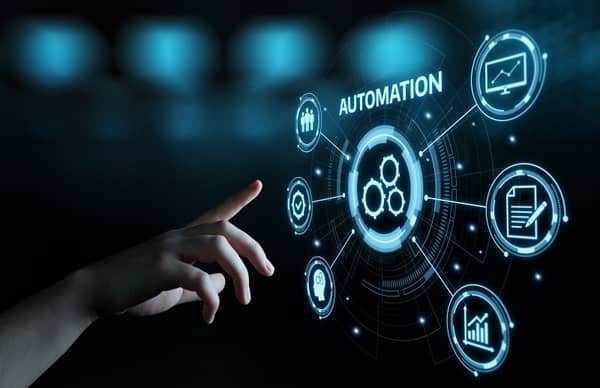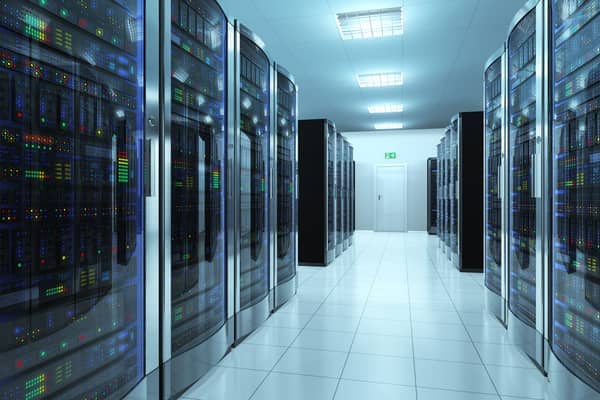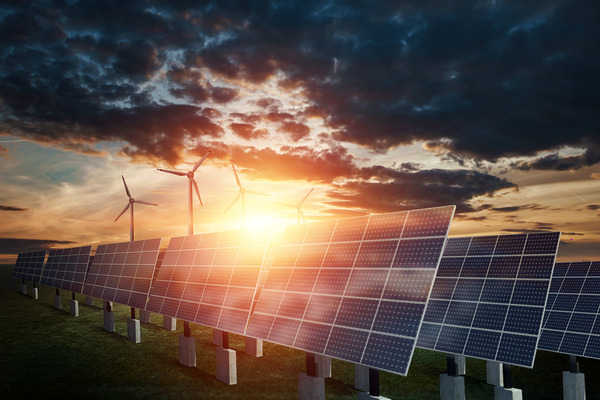
What Is Cybersecurity Automation?
December 14, 2021
Frequently Asked Questions in Technology (Part 9)
January 13, 2022The data center industry continues to grow as more technology innovations are introduced, as more companies are digitized and at the same time expanding their online presence, and as more connected devices are being utilized. In 2020, the data center market in the United States was valued at $8.4 billion and is expected to reach $13.91 billion by 2026. The data center industry has also been cognizant of its environmental impact increasing its efficiency.
Although workloads and computing capacity have grown a tremendous amount in the past couple of years, data centers have been steady in their energy usage using technological advancements to help data center efficiency. Data centers are more efficient than most people realize. There have been several data center technology innovations that have changed the way data centers operate. What does the future low-impact data center look like?

How Are Data Centers Improving Efficiency?
Data centers are utilizing technological advancements to help make operations more efficient. Artificial intelligence has been one of the most important catalysts for the energy-efficient data center. Utilizing the power of artificial intelligence can reduce downtime, allow for continuous monitoring of equipment, enable automated server optimization, and improve cybersecurity. Along with machine learning, artificially intelligent systems learn to monitor and apply the proper temperature, cooling settings, and power usage to maintain efficiency.
Another efficiency-improving technology is virtualization, which allows cloud computing companies to run numerous apps on one server. Virtualization is a way to consolidate its servers. By using fewer servers, a data center provider will consume less energy. By streamlining and increasing the performance of the entire system data centers will space energy, space, and money.
One of the benefits of a virtualized and software-defined data center is the ability to automate. A software-defined system allows the data center to map out its various resources including storage, servers, networks, and more. This enables data center automation. As mentioned earlier, artificially intelligent systems can help monitor the entire system, and with the additional layer of automation, data centers can improve and optimize these systems even more.

An Algae Data Center That Runs on Hydrogen Fuel Cells
Although data centers have been more efficient than people realize, the data center industry has often been criticized for its overall environmental impact. Microsoft’s latest concept has the potential to change the misconception of the industry’s negative environmental effects.
One aspect that affects the world’s environmental impact is CO2 emissions. The production of concrete and its ingredients create carbon dioxide or CO2. Manufacturing cement (which is used for many of the world’s buildings) produces about 0.9 pounds of CO2 for every pound of cement. That’s almost a pound of C02 for every pound of cement. This is also equivalent to 8% of the world’s C02 emissions.
The Microsoft company produces 16 million metric tons of emissions every year with its data centers, the manufacturing of its electronic components, and the energy consumption of Xbox gaming consoles. Microsoft has not only pledged to reduce its carbon emissions but even more so to be carbon-negative by 2030. One of the ways the company is looking to achieve this is by completely changing the way its data centers are built.
Microsoft’s data center “advanced development” team of researchers is searching for a completely different way to build its data centers from the ground up. One of these is building the data center out of algae bricks and using hydrogen fuel cells to power it. Producing algae bricks not only generates less C02, but the process can store some of the leftover CO2 as the bricks dry. This concept will not only change the data center industry, but it could potentially revolutionize how future buildings are made. The technology needed to make all of this a reality isn’t quite there yet, but these types of concepts are what help change industries for the better.
In addition to using algae bricks instead of traditional cement, Microsoft has also been experimenting with hydrogen fuel cells to replace the conventional diesel backup. Hydrogen is more fuel-efficient than diesel as it produces more energy per pound. It is also an unlimited resource unlike fossil fuels like diesel. Over the past couple of years, producing hydrogen fuel has gone down, which makes it a more viable solution for companies.

How Are Large Enterprise Companies Improving Energy Usage?
Companies like Microsoft are expecting to build 50-100 new data centers to keep up with demand—replacing traditional cement bricks with algae bricks is a solution for future data centers. Data centers that are already in operation need a different solution. This is where solar energy comes into play. Some of the largest enterprise companies like Apple, Amazon, Target, Walmart, Switch, and Google have already implemented and led all businesses with their use of solar energy.
Renewable energy, such as solar energy, can enhance the United States’ energy security and at the same time reduce greenhouse gas emissions. Solar energy doesn’t emit toxic elements or pollutants into the atmosphere. These pollutants are not only bad for the environment, but they can harm people as well. While future data center builds will benefit from the efficiency that algae bricks can offer over traditional cement bricks, current data center operations should look to renewable energy sources like solar and wind. These renewable energy solutions have been established to be safe and efficient for the environment.
Conclusion
The data center industry continues to improve upon its operations. Utilizing artificial intelligence, virtualization, and automation—data centers are increasing efficiency in how they operate. By using renewable energy sources like solar power and wind power—data centers are continuing to lower their energy usage. As companies like Microsoft are experimenting with better ways to build new data centers with algae bricks and powering them with hydrogen fuel cells—the data center industry is improving in efficiency and lessening its environmental impact. The world’s reliance on technology, connected devices, and data continues to make data centers essential. But the data center industry is showing urgency in refining and improving its operations for the future.
